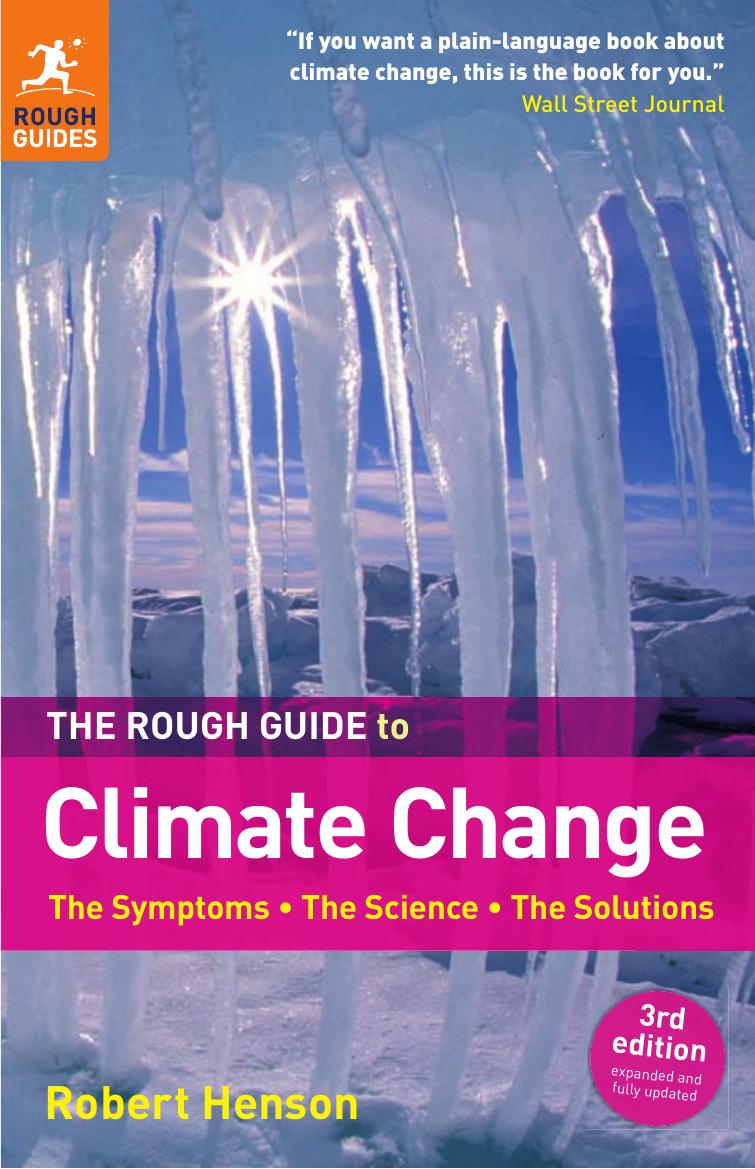The Rough Guide to Climate Change by Robert Henson

Author:Robert Henson
Language: eng
Format: epub, pdf
ISBN: 9781405388672
Publisher: Rough Guides
Published: 2011-09-13T16:00:00+00:00
Global warming itself may be responsible for some of the dimming – perhaps around a third – as it increases the amount of water vapour in the atmosphere (which makes more moisture available for cloud formation) and rearranges the distribution of clouds (lower and/or thicker clouds tend to reflect more than higher, thinner ones). As noted above, it’s not entirely clear how cloud cover is evolving on a global scale, though increases of 1% or more per decade in water vapour have been recorded since the 1980s.
The big issue ahead may not be dimming but brightening. Aerosols are more visible and noxious than greenhouse gases, yet easier to control, so their reduction can be an easier political sell. Most of the world’s highly industrialized nations began cleaning up their smokestacks and exhaust pipes by the 1970s, and the economic downturn of the 1990s across the former Eastern Bloc further reduced aerosol pollution. Although the breakneck pace of development across China and India has kept aerosol emissions high in those areas, the global concentration of aerosols appears to have dropped by as much as 20% since 1990, according to a 2007 NASA report. At the same time, some areas have reported an increase in solar radiation of anywhere from about 1% to 4% per decade since the early 1990s. Beate Liepert (Lamont-Doherty Earth Observatory) suspects this may reflect a recovery from the sun-shielding effects of Mount Pinatubo’s 1991 eruption and from the extensive cloudiness generated by the frequent El Niño events of the early and mid-1990s. All this, in addition to greenhouse gases, may help explain why global temperatures rose as sharply as they did in the last decade of the twentieth century.
Our clean-up of aerosols comes at an ironic price. Few would complain about a world that’s brighter and less fouled by aerosol pollution. Yet the overall cooling impact of aerosols will diminish as we reduce their global prevalence. Thus, in gaining a cleaner atmosphere, the world stands to lose one of its stronger buffers against greenhouse-gas warming. As the planet warms and brightens, it remains to be seen whether policymakers will be alert to this risk.
It’s possible, though, that policymakers won’t have much say in the matter. Commentators such as James Lovelock have raised the concern that a severe global economic downturn (caused by climate change or anything else) could lead to massively reduced aerosol emissions over a relatively short period, causing the planet to warm faster than ever just when we’re least able to put money into doing anything about it.
Download
The Rough Guide to Climate Change by Robert Henson.pdf
This site does not store any files on its server. We only index and link to content provided by other sites. Please contact the content providers to delete copyright contents if any and email us, we'll remove relevant links or contents immediately.
The Secret History by Donna Tartt(16708)
The Social Justice Warrior Handbook by Lisa De Pasquale(11503)
Thirteen Reasons Why by Jay Asher(7825)
This Is How You Lose Her by Junot Diaz(5819)
Weapons of Math Destruction by Cathy O'Neil(5070)
Zero to One by Peter Thiel(4861)
The Myth of the Strong Leader by Archie Brown(4806)
Promise Me, Dad by Joe Biden(4472)
Beartown by Fredrik Backman(4458)
How Democracies Die by Steven Levitsky & Daniel Ziblatt(4439)
Stone's Rules by Roger Stone(4434)
The Fire Next Time by James Baldwin(4365)
100 Deadly Skills by Clint Emerson(4103)
A Higher Loyalty: Truth, Lies, and Leadership by James Comey(4052)
Rise and Kill First by Ronen Bergman(4038)
The David Icke Guide to the Global Conspiracy (and how to end it) by David Icke(3908)
The Farm by Tom Rob Smith(3890)
Secrecy World by Jake Bernstein(3801)
The Doomsday Machine by Daniel Ellsberg(3749)
